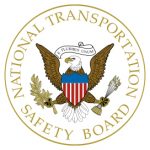
The funds are part of the $250 million that the FRA has available specifically for the implementation of PTC appropriated from the Consolidated Appropriations Act of 2018.
A Notice Of Funding Opportunity (NOFO) for the $250 million was published in May, and solicitations for the funds had to be received by July 2. The FRA expects to publish a second NOFO in the Federal Register for the remaining $46,301,702 available.
Click here to read the full press release from the FRA and to view a list of railroads receiving the grant money.
As for the state of PTC, 15 railroads have installed 100 percent of the PTC system hardware on their locomotives and their trackage, FRA said. BNSF and KCS are the only two Class I railroads listed as having 100 percent of their track segments installed with PTC while Union Pacific is listed as having 98 percent of installation completed. BNSF, Metrolink and Northstar Commuter Rail are all listed as having PTC in complete operation. FRA reports that 37,705 route miles or 65 percent of the approximately 58,000 route miles have sufficient revenue service demonstration or are in operation. (Revenue service demonstration is one of the criteria needed to qualify for an extension of the deadline.)
The second quarter has also seen a 25 percent drop in the number of “at-risk” railroads – FRA considers any railroad that installed less than 90 percent of its PTC system hardware as of June 30, 2018, to be at risk. There are currently nine at-risk railroads: New Mexico Rail Runner Express, Capital Metropolitan Transportation Authority, New Jersey Transit, Altamont Corridor Express, MARC, Trinity Railway Express, TriRail, Caltrain and Florida’s SunRail. Of the nine deemed at risk, all but three (Altamont Corridor Express, New Jersey Transit and TriRail) were awarded part of the $250 million grant.
“The railroads have achieved some significant improvements over the past year implementing this safety technology,” said FRA Administrator Ron Batory. “While we are seeing progress among a majority of railroads, we want to see everyone meet their requirements.”
All Class I railroads and commuter railroads are required to have PTC fully implemented by Dec. 31, 2018, unless the carrier qualifies for an alternative schedule under the Positive Train Control Enforcement and Implementation Act of 2015 (PTCEI Act). Railroads approved for an alternate schedule must contain a deadline that is as soon as practicable, but no later than Dec. 31, 2020.
Click here to view a chart of carriers’ progress of implementing PTC. Click here to read FRA’s entire press release on the progress of PTC implementation.
Tag: FRA
On Aug. 30 from 10 a.m. to 4 p.m., the Federal Railroad Administration will host a seminar on drug testing policy and rail safety in Kansas City, Mo.
The seminar dives into 2017 drug testing amendments and a pair of amendments to safety rules created in November 2014 and December 2017. It will be held at the National Weather Service Training Center Auditorium, 37220 NW 101st, Kansas City, MO 64153. A government-issued ID is required to enter the building. There is no charge to attend.
To register, visit https://www.fra.dot.gov/conference/2018/reoseminar/register.aspx.
A victory for safety was achieved in June when the Federal Railroad Administration’s (FRA) Railroad Safety Board denied a request by the Association of American Railroads (AAR) to lengthen the “off-air” restriction from four to 24 hours for required brake tests and inspections.
AAR had written to FRA in December 2017 seeking a petition for waiver, arguing that safety would not be affected and that lengthening the off-air restriction would bring U.S. requirements in line with Canada’s 24-hour off-air restriction.
However, SMART Transportation Division President John Previsich and union leaders from the Brotherhood of Locomotive Engineers and Trainmen (BLET), Brotherhood of Railroad Signalmen (BRS), American Train Dispatchers Association (ATDA) and Brotherhood Railway Carmen Division (TCU/IAM)’s letter in February urged FRA officials to deny the request.
The waiver would be unenforceable and too far-reaching, the unions argued.
“Despite the carriers’ safety assurances, the labor organizations have concerns with this far sweeping request for waiver given the fact that it will cover AAR’s entire membership,” the unions said. “To allow such a sweeping waiver request to go forward, each railroad would have to demonstrate that the cars on their railroad had state of the art brake valves, dryers and automatic moisture drainage. It is hard to imagine FRA granting such a ‘one size fits all’ waiver to each of AAR’s member railroads.”
The FRA board agreed with SMART TD and the other rail unions, with Robert Lauby, FRA Associate Administrator for Railroad Safety, saying in the agency’s June 19 denial letter that the petition was better considered as part of the rulemaking process.
The board also said that AAR failed to prove that the changes would not have an adverse effect on safety.
“Based on its review and analysis, the board concluded that granting the requested relief would not be in the public interest or consistent with rail safety,” Lauby wrote.
Lauby also said in the letter that the data provided by AAR to support its petition did not cover the variety of real-world conditions encountered while running trains.
“Absent more detailed data demonstrating that safety would not be compromised, the Board concluded that the waiver request was not justified,” Lauby said.
A man’s rail career was jeopardized after eating a gummy bear, and SMART Transportation Division cautions members of the risks of a positive drug test after consuming “hemp products,” which are unregulated by the federal government and considered illegal by federal law.
Virginia State Legislative Director Ronnie Hobbs says a 28-year-old member experienced a positive Department of Transportation drug test after eating a candy containing the substance cannabidiol, commonly known as CBD, which is a chemical derived from the marijuana plant.
CBD is legal in products in many states, including Virginia, and reportedly has medicinal properties such as relaxation, pain relief and anxiety reduction in users. Because of these properties and the adoption of medical marijuana laws in multiple states, hemp products containing CBD such as ingestible pills or tablets, candies, “vaping” fluid, topical ointments and oils have become more widely available.
“This is a major issue,” said Hobbs. “These products can cost members their jobs – you don’t know what you’re buying.”
The Federal Railroad Administration (FRA) issued a statement in late April warning of the potential risk of using anything containing CBD, such as gummies or hemp oil.
Since CBD comes from the marijuana plant, federal law considers it an illegal Schedule I controlled substance, even though it may be for sale and legal to use in individual states. Because the federal government considers it illegal, products containing it are unregulated by the Food and Drug Administration (FDA) and there is no oversight of these products.
As a result, users of hemp products run the risk of taking in the intoxicating component of marijuana called delta-9 tetrahydrocannabinol, aka THC. Since there is no regulatory oversight, the label may claim the products have no THC content, but there is no guarantee that is the case, the FRA said.
“CBD products can, therefore, be definitely a ‘buyer beware’ concern in terms of product content and quality control,” the FRA stated. “In addition, CBD products may be innocently or purposefully sold with varying amounts of THC present, which will obviously not be listed as an ingredient.”
So the label might be wrong, saying that the product didn’t contain THC when it actually did, as was the case for the member, Hobbs said.
“It’s creative packaging,” he said. “We need to get a strong message out. Even though the packaging says, ‘no THC,’ there could be THC in there. There’s no oversight.”
Drug tests administered by the DOT target a byproduct called THCCOOH, which appears in a person’s urine after the use of a product containing THC. While a product containing pure CBD would not trigger a positive, a product with a mix of THC along with the CBD taken into the body could trigger a positive test.
“If THC is present in sufficient amounts, that could potentially be the source of a positive federal drug test,” the FRA said.
Even if a regulated employee says the source of a positive marijuana test is a hemp product, FRA says the test still will be verified by the Medical Review Officer (MRO) as a positive result.
That’s what happened to the father of two after just one gummy bear, Hobbs said.
Railroads’ progress on Positive Train Control remains uneven

At the direction of Secretary Elaine L. Chao, the FRA is taking a proactive approach to ensure railroads acquire, install, test and fully implement certified PTC systems in time to meet the congressional interim deadline of December 31, 2018.
“It is the railroads’ responsibility to meet the congressionally mandated PTC requirements,” said FRA Administrator Ronald L. Batory. “The FRA is committed to doing its part to ensure railroads and suppliers are working together to implement PTC systems.”
Between January 2 and February 14, 2018, FRA’s leadership hosted face-to-face meetings with executives from each of the 41 railroads subject to the statutory mandate. The purpose of the meetings was to evaluate each railroad’s PTC status and learn what remaining steps each needs to take to have a PTC system fully implemented by the December deadline or, at a minimum, to meet the statutory criteria necessary to qualify for an alternative schedule.
As a result of the meetings with railroads, FRA is now meeting with PTC suppliers to learn more about their capacity to meet the high demands for railroads’ implementation of PTC systems in a timely manner.
PTC systems are designed to prevent certain train-to-train collisions, over-speed derailments, incursions into established work zone limits, and trains going to the wrong tracks because a switch was left in the wrong position.
All railroads subject to the statutory PTC implementation mandate must implement FRA-certified and interoperable PTC systems by the end of the year. Under the Positive Train Control Enforcement and Implementation Act of 2015, however, Congress permits a railroad to request FRA’s approval of an “alternate schedule” with a deadline beyond December 31, 2018, but no later than December 31, 2020, for certain non-hardware, operational aspects of PTC system implementation. The congressional mandate requires FRA to approve a railroad’s alternative schedule with a deadline no later than December 31, 2020, if a railroad submits a written request to FRA that demonstrates the railroad has met the statutory criteria set forth under 49 U.S.C. § 20157(a)(3)(B).
The fourth quarter data, current as of December 31, 2017, shows PTC systems are in operation on approximately 56 percent of freight railroads’ route miles that are required to be governed by PTC systems—up from 45 percent last quarter and 16 percent on December 31, 2016. Passenger railroads have made less progress—with PTC systems in operation on only 24 percent of required route miles, unchanged from the previous quarter.
The latest data confirms that railroads continue to make progress in installing PTC system hardware, with 15 railroads reporting they have completed installation of all hardware necessary for PTC system implementation and another 11 railroads reporting they have installed over 80 percent of PTC system hardware. In addition, all but three railroads report having acquired sufficient spectrum for their PTC system needs.
For more key implementation data for the fourth quarter, see the infographics here: https://www.fra.dot.gov/ptc.
To view the public version of each railroad’s Quarterly PTC Progress Report (Form FRA F 6180.165, OMB Control No. 2130-0553) for Quarter 4 of 2017, please visit each railroad’s PTC docket on https://www.regulations.gov/. Railroads’ PTC docket numbers are available at https://www.fra.dot.gov/Page/P0628.
On February 28, 2018, Ron Batory was sworn in as Administrator of the Federal Railroad Administration. Representing SMART General President Joe Sellers is Steve Dodd, director of government affairs, who is pictured with Ron Batory.
Batory has more than 45 years of rail industry experience and most recently served as president and chief operating officer of Conrail. Batory joined the company in 1998 as vice president-operations and was appointed COO in 2004. He retired from Conrail last year.
Before that, he was president of the Belt Railway Co. of Chicago. Batory also spent more than 20 years working for both 
According to GP Sellers, “We are pleased to have Ron Batory as the administrator of the Federal Railroad Administration (FRA).” He added that, “Ron Batory is knowledgeable and experienced in the railroad industry. We look forward to collaborating with him on PTC and other safety initiatives.”

The Federal Railroad Administration (FRA) received one urgent safety recommendation based on NTSB findings in the agency’s investigation of the Feb. 4, 2018, collision of an Amtrak train and a CSX train near Cayce, S.C. The conductor and engineer of the Amtrak train died as a result of the collision. The NTSB issued two urgent safety recommendations to the Metropolitan Transportation Authority (MTA) based on findings from its investigation of the June 10, 2017, Long Island Rail Road (LIRR) accident in which a roadway worker died near Queens Village, N.Y.
In the investigation of the train collision in Cayce, South Carolina, investigators found that on the day before the accident, CSX personnel suspended the traffic control signal system to install updated traffic control system components for the implementation of positive train control (PTC). The lack of signals required dispatchers to use track warrants to move trains through the work territory.
In this accident, and in a similar March 14, 2016, accident in Granger, Wyo., safe movement of the trains, through the signal suspension, depended upon proper switch alignment. That switch alignment relied on error-free manual work, which was not safeguarded by either technology or supervision, creating a single point of failure.
The NTSB concludes additional measures are needed to ensure safe operations during signal suspension and so issued an urgent safety recommendation to the FRA seeking an emergency order directing restricted speed for trains or locomotives passing through signal suspensions when a switch has been reported relined for a main track.
“The installation of the life-saving positive train control technology on the CSX tracks is not the cause of the Cayce, S.C. train collision,” said NTSB Chairman Robert Sumwalt.
“While the collision remains under investigation, we know that signal suspensions are an unusual operating condition, used for signal maintenance, repair and installation, that have the potential to increase the risk of train collisions. That risk was not mitigated in the Cayce collision. Our recommendation, if implemented, works to mitigate that increased risk.” said Sumwalt.
During the investigation of the LIRR accident, the NTSB identified an improper practice by LIRR roadway workers who were working on or near the tracks. LIRR employees were using “train approach warning” as their method of on-track safety, but they did not clear the track, as required, when trains approached and their “predetermined place of safety” did not comply with LIRR rules and procedures.
The NTSB is concerned LIRR management is overlooking and therefore normalizing noncompliance with safety rules and regulations for proper clearing of tracks while using “train approach warning” for worker protection. The two urgent safety recommendations to the MTA call for MTA to audit LIRR’s use of “train approach warning” for worker protection, and, to implement corrective action for deficiencies found through the audit.
The full safety recommendation reports for these urgent safety recommendations are available online at https://goo.gl/z87Dpz and https://goo.gl/LVVef3.
After months of having his nomination on hold in the U.S. Senate, Ronald L. Batory was confirmed Tuesday evening as administrator of the Federal Railroad Administration by unanimous voice vote.
Batory’s ascension to the position came after U.S. Sen. Chuck Schumer, the Senate minority leader, removed a hold he had placed on the nomination.
The hold on Batory’s nomination had been an attempt by the Democratic senator to work out federal funding for the multibillion-dollar Gateway Tunnel project between his home state of New York and New Jersey.
Batory, former COO and president of Conrail, was nominated in July to lead the FRA by President Donald Trump. As the delay on his confirmation continued, Batory began working in November as a special assistant to federal Department of Transportation Secretary Elaine Chao, advising on rail matters.
“Ron Batory is a veteran railroader who knows the industry,” SMART TD National Legislative Director John Risch said. “We look forward to working with him at FRA.”
While Batory’s confirmation remained in political limbo, the FRA was being described as “rudderless” in some media reports.
Deputy Administrator Heath Hall, who had been leading the agency, resigned mere days before Batory’s confirmation after allegations surfaced in the media that Hall was working a second job.
Hall had been on a leave of absence from the agency since late January, and Juan D. Reyes III had been overseeing the FRA.
In addition to Batory’s confirmation, Raymond Martinez was confirmed by the Senate as administrator of the Federal Motor Carrier Safety Administration.
